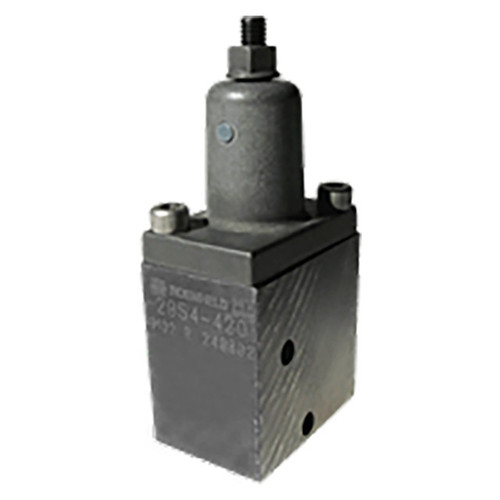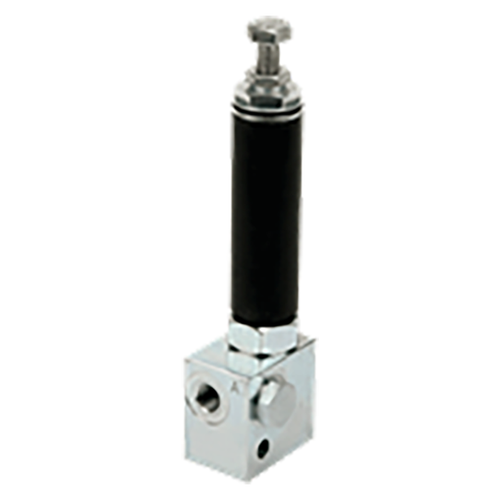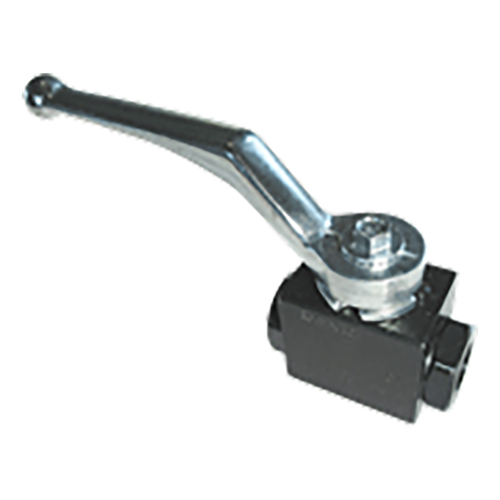Roemheld Sequence Valves-Series Mounted
7250 psi maxUse to automatically sequence positioning, clamping, and supporting functions as system pressure increases. Sequence Valves prevent fluid flow to a portion of the fixture until a predetermined trigger pressure is achieved (easily adjustable). The series-mounted version shown here is used for for multi-stage sequencing (2 to 6 sequence valves can be mounted in series, with only one input line).
Application Information
To set up initially, turn the adjustment screw on top until the desired trigger pressure is achieved. During normal operation, Sequence Valve opens automatically when system pressure reaches the set trigger pressure. After the valve opens, system pressure rises uniformly on both upstream and downstream sides (no pressure drop upstream when the valve opens).
Design Considerations
Choose normal-range model instead of low range whenever possible. Normal-range version provides a wider adjustment range, especially important when used with an Air Power Unit, which has a 2200-psi minimum operating pressure. For multi-stage sequencing, set trigger pressures in steps of at least 750 psi (normal range) or 375 psi (low range).
Mounting & Fluid Supply
Use one input valve and up to five series valves. Only one pressure connection is required (to the input valve's P port). The other valves are connected by an internal passage, sealed with O-rings between each valve (O-rings furnished). Two connecting bolts are required to fasten valves together. 1/4" BSPP ports. Mount in any position, horizontal or vertical. Do not use NPT fittings.
Parts Specification
| Version | Trigger-pressure Adjustment Range (PSI) | Pressure Change Per Screw Turn (PSI) | Maximum Flow Rate (cu In/min) | A Diameter (mm) | B (mm) | Weight (lbs) |
| Low Range | 150 to 2200 PSI | 220 PSI | 490 cu in/min | 22mm | 110mm | 1.1 lbs. |
Warning:
This product can expose you to materials and/or chemicals including arsenic, lead, and other materials and/or chemicals which are known to the state of California to cause cancer and/or reproductive harm.
For more information, visit www.P65Warnings.ca.gov

 714.897.1700
714.897.1700
 Chat
Chat
 Email
Email
 Quotes
Quotes
 Quick Order
Quick Order










